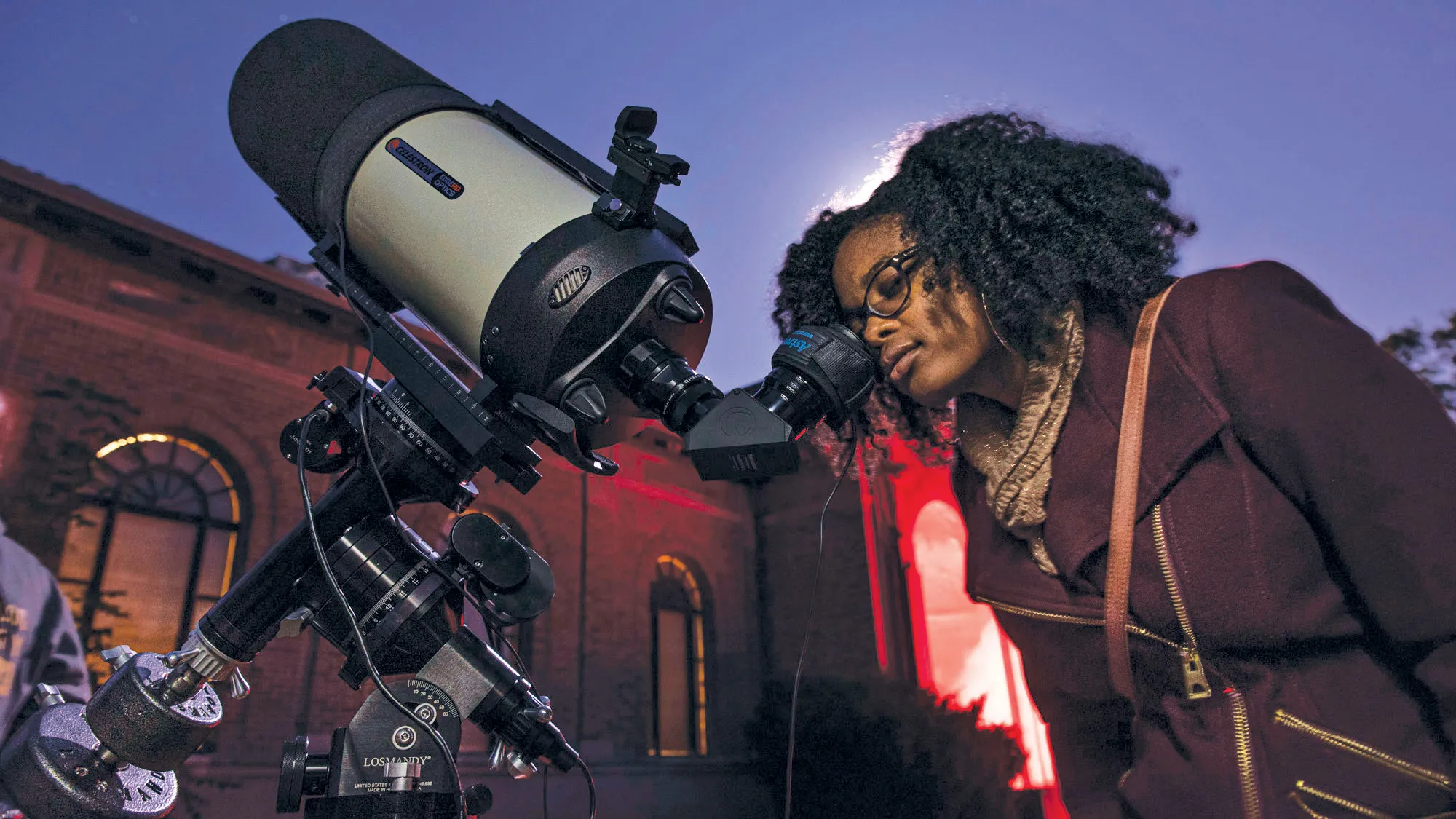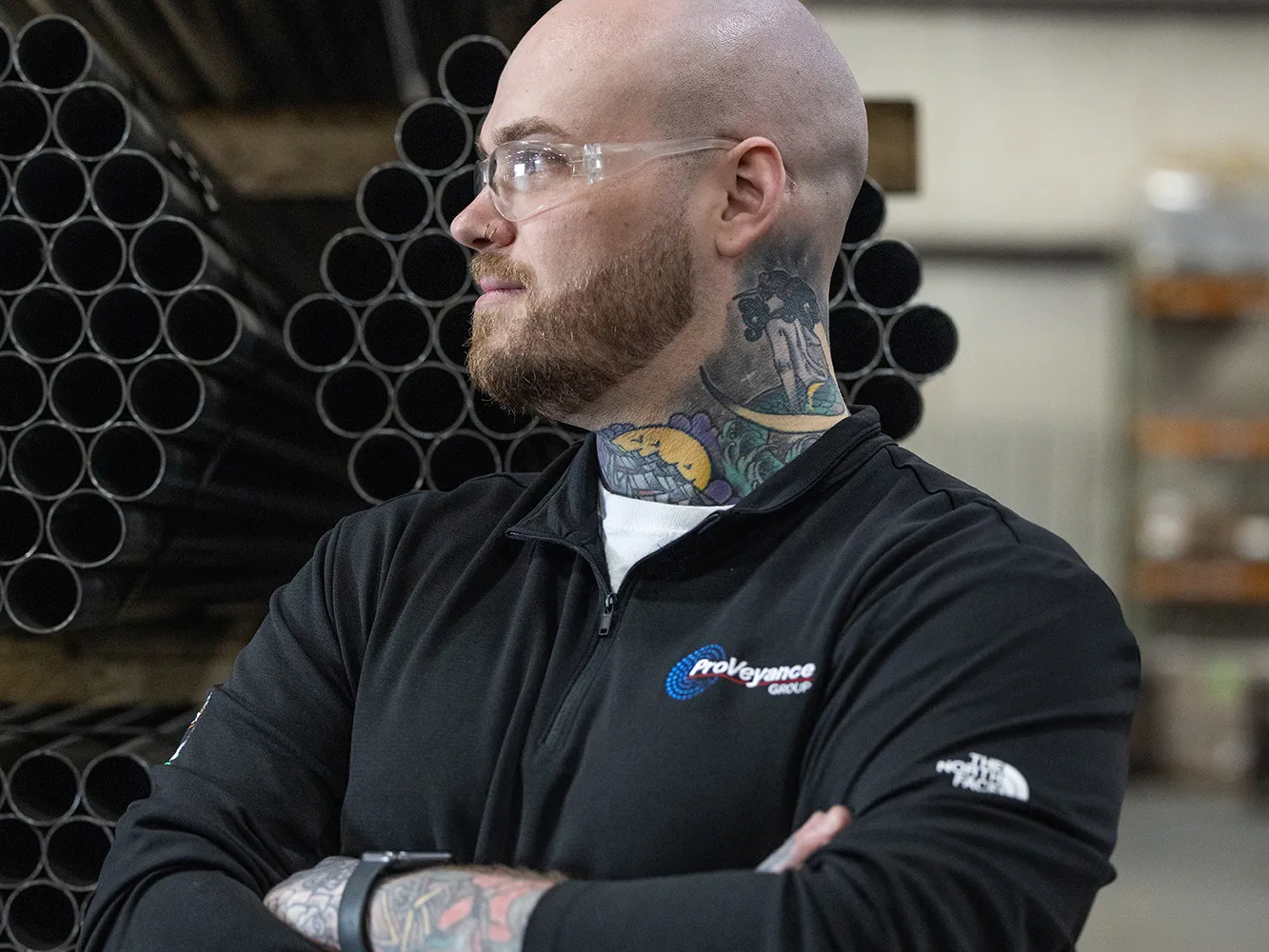Caprice Phillips is busy solving cosmic mysteries
Ohio State prepared this two-time graduate to ask and answer big questions in a prestigious NASA fellowship.

Caprice Phillips ’22 MS, ’25 PhD is broadening her research on brown dwarfs as a NASA Hubble Fellowship Program Sagan Fellow. (Photo courtesy of Phillips)
Unlike those who hunt for the secrets of the universe in distant supernovae or far-flung asteroids, Caprice Phillips ’22 MS, ’25 PhD prefers to keep her head in the clouds. As a doctoral candidate at Ohio State, Phillips poured her time into studying brown dwarfs, gaseous celestial bodies whose masses sit between a planet and a star. She wants to understand how atmospheric processes influence the creation of planets outside our solar system.
“Brown dwarfs have clouds that are a lot different than the ones here on Earth,” she says. “We have water clouds. They can have silicates or dust-based clouds, and these differences in the atmosphere impact the spectra that we see.”
Peering past otherworldly hazes isn’t easy, as they make it challenging to discern important features, such as the potential habitability of exoplanets, worlds that don’t orbit our sun. Yet using insights from the James Webb Space Telescope, Phillips revealed that brown dwarfs’ unique atmospheres make them ripe places to study environments unlike our own.
“These misfits are intrinsically very interesting in general for what we can learn from them and the beautiful data that we can obtain,” Phillips says. “Those lessons then trickle down into our conclusions about other planets, all the way down to Earthlike worlds around sunlike stars.”
It was such work that recently led Phillips to be named a recipient of the NASA Hubble Fellowship, a program that supports innovative early-career astrophysicists. As one of three Sagan Fellows whose work seeks to discover whether we are alone in the universe, Phillips will spend the next few years broadening her research at the University of California, Santa Cruz, utilizing JWST data to create even more detailed atmospheric observations of brown dwarfs.
It’s in this way, by outlining the more fundamental properties of planetary formation, that her work will be a critical stepping stone to fostering space exploration beyond our solar system, especially as future concept missions such as the Habitable Worlds Observatory get into gear.
“If we’re alone or not, I think either way it’s a profound thing,” she says. “These questions and problems seem endless, but it’s a privilege to be able to study them and even ask them.”
Part of that privilege stems from the tight relationships Phillips has made on her journey, as she credits some of the most memorable heights of her manifold career to the vast network of support that has bolstered her towards exciting new goals and opportunities. “Having good support systems and mentors has been really crucial to me,” she says. “At Ohio State in particular, they encourage you to seek collaborators who help continue to open doors for you.”
Notably, Phillips has been a leader in community empowerment herself, both as the vice president of the STEM organization Black In Astro and as a member of various technology and science organizing committees.
“I’m always going to share my knowledge because I want to support and build community for people, both through outreach and educational efforts, research or teaching,” she says.
Such enthusiasm may become her legacy, as when it comes to her impact here on Earth, Phillips’ primary hope for the coming decade includes inspiring the next generation of scientists in the field to grow beyond her own sky-high research achievements.
“The curiosity of it all is something that can get a lot of people passionate about space,” she says. “It may be naive, but I think making that tangible is very cool.”



